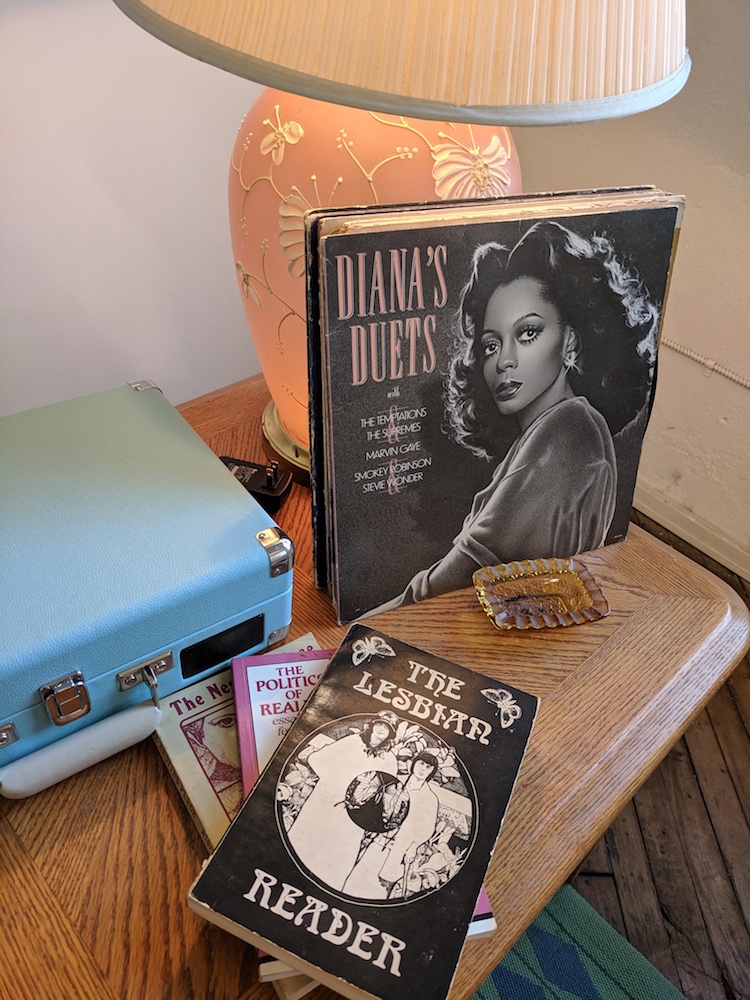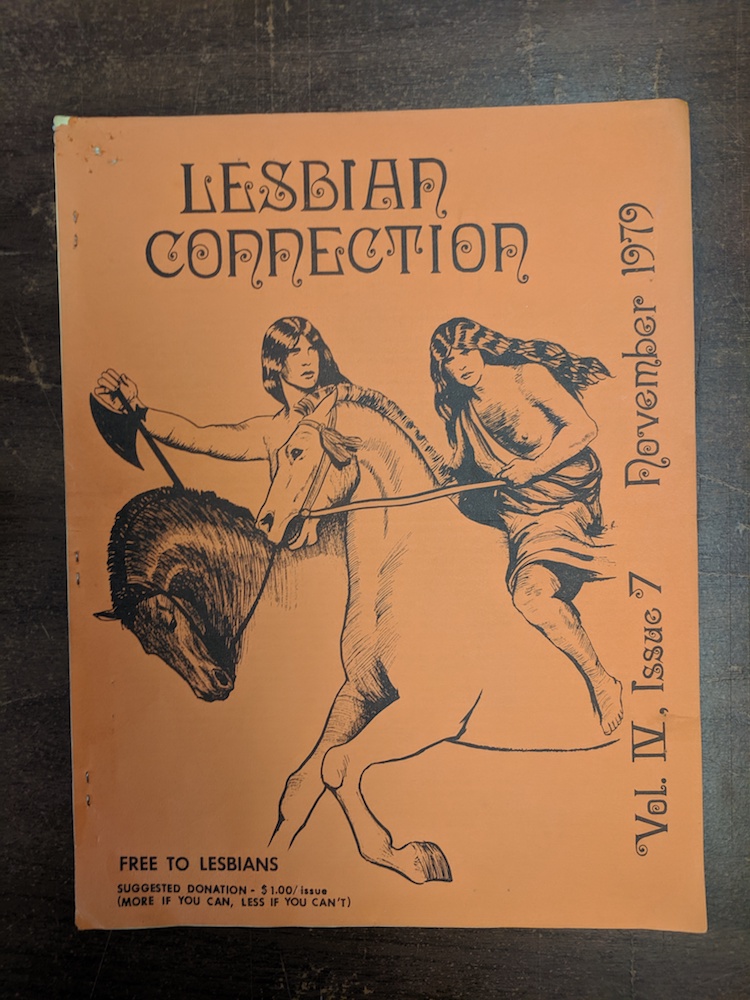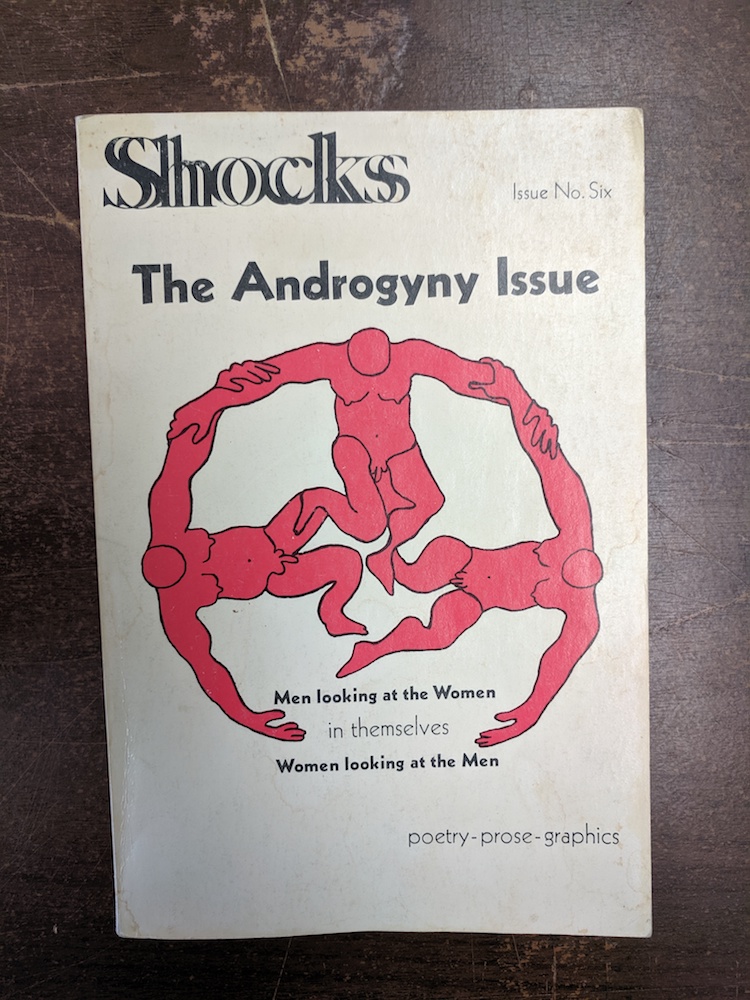Remembering the Past & Forging a Future, Pride 2020

As Pride Month rolls to close, it’s hard to decide how to commemorate this time. The frenetic currents of social change this Pride Month feel closer to the incendiary Stonewall Riots that sparked the modern LGBTQ+ movement than Prides of decades past. Then, as now, marginalized and oppressed people fought back against police brutality with uprisings and demanded better. The road to “better” is pocked with potholes and false turns and surprising bridges to new regions of solidarity.
June 2020 has been one of the most eventful Pride Months in history and, to mark the close of it, we spoke with Katarina Troutman, MSLIS, who leads the processing of a decades-old collection of zines that was recently donated to the John J. Wilcox Jr. Archives at the William Way Community Center. Art, zines, and books are hallmarks of culture and markers for cultural periods, both mundane and monumental.
As we push the needle yet again, it seems even more important to record our history as we live it, to mark our path mapping the struggle towards justice for us to look back on, and from which future generations can begin.
Make your mark with this Homeschool with Mural Arts zine-making tutorial by Teaching Artist Taty Hernandez.

Could you tell us how the The John J. Wilcox, Jr. Archives at the William Way Community Center obtained these zines?
KT: This collection was donated to the Archives by Anna Pachner after being the focus of an exhibit at Vox Populi Gallery in late 2019. Pachner’s brother actually found this box of magazines and chapbooks put out for trash in Burlington, VT, in 2018. He passed them along to Pachner and after spending some time with them, she thought it was important that the LGBT community be able to interact with the materials. After the successful exhibit at Vox, she wanted to ensure this access to the content continued, and got in touch with John Anderies to donate the materials to the Archives. In January 2020, I began to process the donated collection.

What is the importance of finding zines from this time period?
KT: These magazines offer a glimpse into the life of an out lesbian in a rural area in a time when that wasn’t necessarily an easy or widely accepted way to live. Finding community through these magazines and chapbooks would have been very important. I love this collection because of the personality it paints of its original owner. Changing addresses on the mailing labels show that the owner carried these materials across many dwellings and that they were read by roommates and lovers, some notes in the margins show interaction with the community and little signs of life like the tallying of a card game.
These materials span the years 1969 to 1991, so through them we are able to trace the rise of feminism, the importance of intersectionality coming to the forefront, the AIDS crisis, the emergence of Ballroom culture, and so many other integral parts of gay history. Having these materials and knowing the context, that they were being read by a young lesbian in Vermont to stay connected to the wider gay community, makes you wonder who else was reading these materials at the time and what these materials meant to them. Who found a lover through the personal ads, where else were queers supposed to find content on the intersection of socialism and queerness, who found a comprehensive list of queer films that changed their lives? I guess part of the importance here is that these materials are a glimpse into how gay community and dialogue was formed before the internet.
It’s also important to note that these materials are heavily skewed toward content about and for lesbians. The John J. Wilcox, Jr. Archives in particular has made an effort to collect materials that branch out from the content for and about white homosexual cis men – a demographic that makes up an overwhelming amount of the typical gay archival content. The Archives is attempting to focus on collecting materials that pertain to lesbians, queers, the trans community, the Black community, people of color, etc. This collection helps to push the dial a bit.

What do these zines tell us about gay culture from that time?
KT: When I spoke to Anna about this collection and the exhibit at Vox, she expressed that a big goal of this project was to lessen the dissonance between the younger and elder queer communities. The differing generations have so much in common and so much to learn from one another. Our elders may be apprehensive to speak on what they know for fear that they may not utilize the current lexicon and therefore could offend someone unintentionally. These magazines and chapbooks do highlight some of these differences.
However, these materials also highlight so much about what is the same about our community now and 50 years in the past: the LGBT community is still fighting for basic human rights, feels an immense protection over and solidarity with our community, and looks toward one another for art, music, readings, etc. that reflect our lives. These similarities of generations and the history of our community, I think, are what this collection and the Vox exhibit were all about.

Are there any other special features about these zines that you would like to point out?
KT: Once the Archives is open to visitors and researchers again, I highly suggest anyone interested in this collection come by and take a look. There’s so much gay history in the Archives; it’s truly inspiring. Holding the same materials in your hands that our LGBT ancestors have held builds such a connection to the past and strengthens your sense of community. Until then, following the Archives on Instagram (@waygayarchives) is a good way to stay connected!
Lastly, I just want to point out that I think it’s great what Anna did with this collection. When these materials were first published, they created a dialogue. Half a century later, this collection and the exhibit at Vox reignited the conversation with a whole new generation.
Box of Vintage Gay Zines has an instagram! @boxofvintagegayzines
William Way Community Center’s webpage: https://www.waygay.org/
All images courtesy of the John J. Wilcox Jr. Archives at the William Way Community Center.






